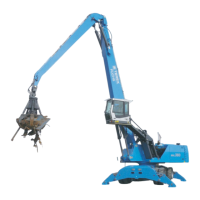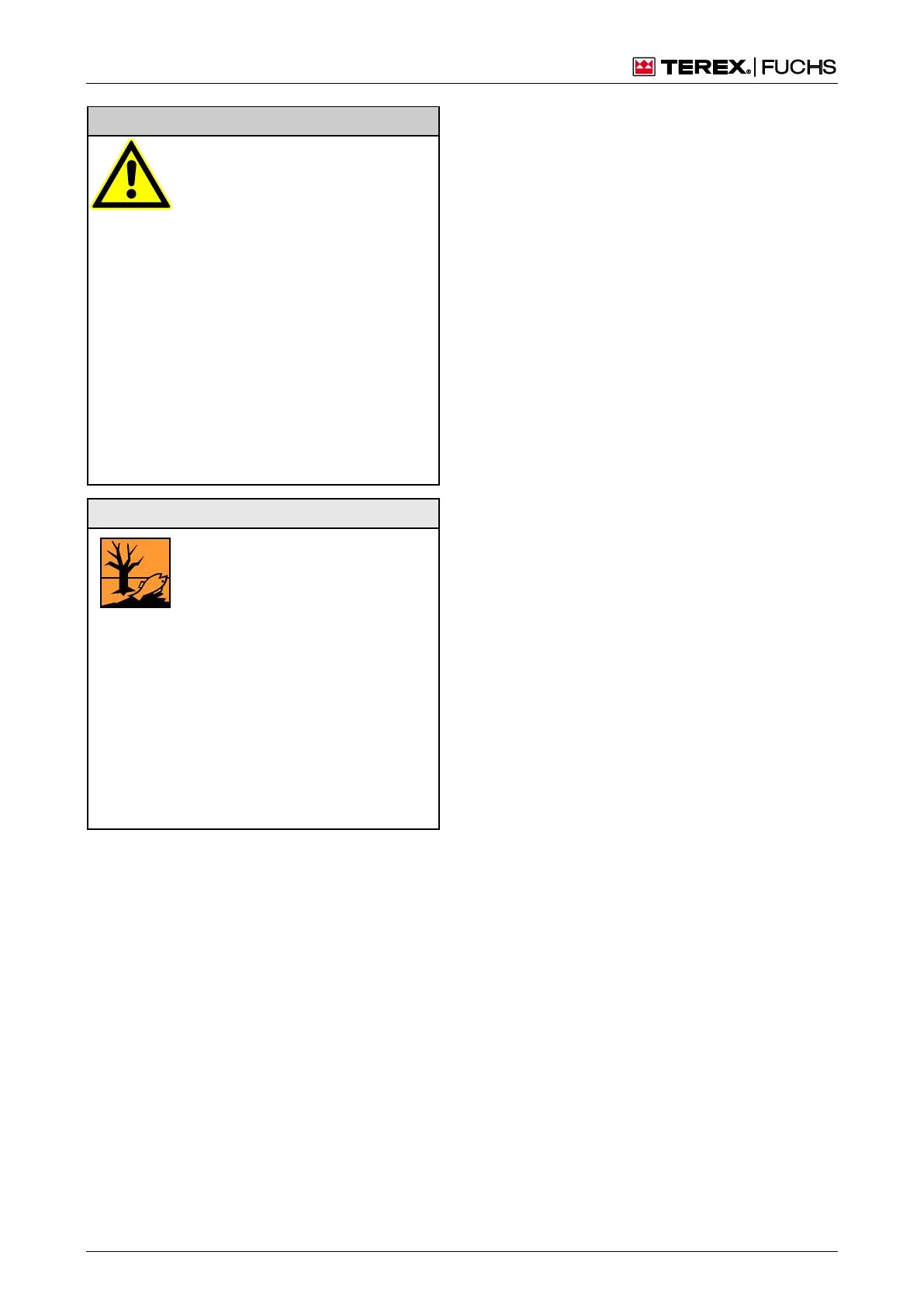7 CARE AND MAINTENANCE
7.2 MHL380 D
Danger of suffocation due to ni-
trogen
• Pressure accumulators are under
hydraulic and gas pressure and
must not be opened. They con-
tain hydraulic fluid and nitrogen
(risk of asphyxiation).
• Only trained specialist personnel
are permitted to replace pressure
accumulators and/or put them in-
to operation. Do not touch a
pressure accumulator unless it
has cooled down.
• No changes may be made to the
pressure accumulators (welding,
drilling, forcing open, etc.).
In an emergency: Administer first
aid, seek treatment from a doctor
When changing fuels, lubricants
and coolants (e.g. engine oil, lubri-
cating oil, hydraulic fluid, fuel, etc.)
care must be taken to ensure that
these fluids do not seep into the
ground. Suitable containers must
be used to collect them. However, if
they do seep into the ground, the
leak must be stopped immediately
and the fluid bound with suitable
binding agents. If necessary, the
soil affected must be removed.
Binding agents and removed soil
must be disposed of properly. The
environmental standards currently
valid must be observed.
7.2 Regular oil analyses
Rather than questioning the specified oil
change intervals, oil analyses are designed to
identify potential for reducing maintenance
costs and detect imminent damage, as well as
increase environmental awareness.
Advantages of an oil analysis
Extension of oil change intervals in the case
of normal or light-duty operating conditions
Minimum wear of high-quality components
because of optimum utilization of fuels, lub-
ricants and coolants
Periodic lab analyses allow early recognition
of imminent damage
Early service/repair work protects equipment
from serious and unforeseeable damage
Consequential damage is avoided
At what intervals should the oil be ana-
lyzed?
Regular oil analyses track changes in the
condition of the oil condition and that of the
machine.
Upon reaching the scheduled oil change time,
oils should be analyzed at the following inter-
vals in order to check their quality and thus
extend oil change intervals:
Hydraulic oil: 500 operating hours
Based on the initial results, the lab will rec-
ommend a date for the next oil sample to be
taken.
Ask your TEREX | Fuchs dealer for an infor-
mation leaflet specifying the scope and pro-
cedures involved.

